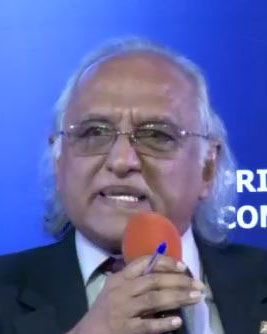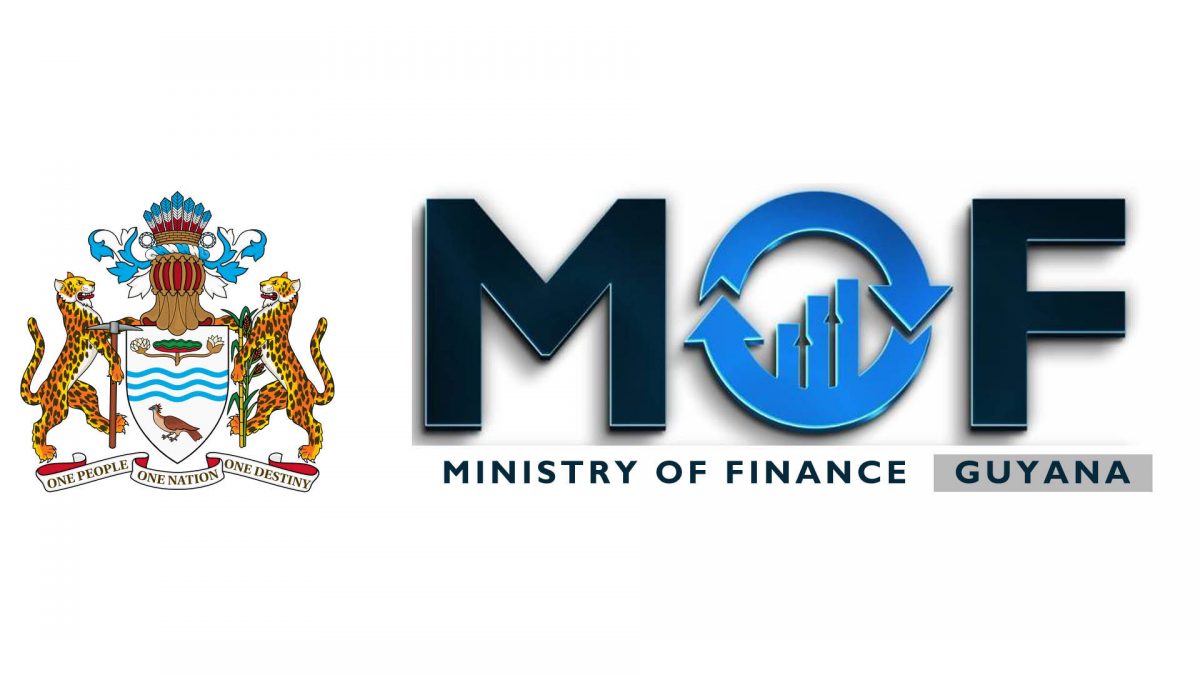Commentator Christopher Ram yesterday pilloried the government’s plans for massive hikes in the domestic and external debt ceilings and a steep rise in extractions from the NRF even as the Ministry of Finance sought to defend the move.
Ram in a letter in yesterday’s Stabroek News noted that Minister of Finance Dr Ashni Singh has kept his Budget Speech promise to come back to the National Assembly to a) raise the debt ceiling b) to revise upward the NRF withdrawal rule and c) saving an increasing share of the inflows into the Fund. Earlier on Friday, via the Fiscal Enactments (Amendment) Bill 2024 Ram said that the Minister delivered more than even his most ardent supporter would have expected.
He said that the Minister proposes to increase the borrowing ceiling for Public (Domestic) Loans by 100% from G$750,000 Mn. to G$1,500,000 Mn. and the borrowing ceiling for External Loans by 66.7% from G$900,000 Mn. to G$1,500,000 Mn.

“It means that since the PPP/C came to power in August 2020 they have increased the domestic debt ceiling by 900% and the external debt ceiling by 275%. By any measure, even for the fastest growing economy in the world, these are staggering increases, with obvious consequences. The domestic debt reported in the Budget Speech at December 2023 was $569,913 Mn. which means that he can borrow as much as $931,000 Mn. more on the domestic market. The 2024 Budget showed that the Government proposes to borrow in 2024 some $189,522 Mn. (net) from the domestic market and $206,394 Mn from external sources”, Ram said.
He added that the Minister is giving himself massive borrowing space both from local and external sources and said that it would be interesting to see how the private sector responds to this proposal which can crowd out local borrowings and possibly carry up the cost of capital.
Downturn
Contrary to the statement in the Budget Speech, Ram said that the proposal by the Minister to expand the automatic withdrawals from the Natural Resource Fund (NRF) “will significantly reduce what is left for intergenerational savings and for expenditure stability in periods of downturn. To give one simple example, after US$2,000 Mn. of earnings from profit share and royalty, only US$50 million would be saved under the new arrangement, compared with US$750 million under the replaced formula. Let us take it further but expressed another way, savings of US$1,710 million would have been saved from earnings of US$3,000 Mn. under the existing system. Under the new proposal it would require earnings of US$6,000 Mn!” Ram declared.
He added “The Minister has delivered on his promise to increase the borrowing ceilings and NRF withdrawals. Under-standably, he has not been able to achieve the trick of withdrawing more and saving more at the same time”.
He pointed out that the accounting firm Ram & McRae expressed concern in its recent Budget Focus that it is dangerous for any Government to treat the NRF like some ordinary piece of legislation. “Sadly, that fear has been realized”, Ram said.
In a statement last evening, the Ministry of Finance defended its actions.
It pointed out that in his January 15 budget, Singh underscored the need to maintain a “flexible approach to financing the accelerated transformation agenda, which includes a ramped-up PSIP (Public Sector Investment Programme) and accelerated delivery of social services and social safety nets to improve the lives of all Guyanese”.
Once approved by the National Assembly, the Ministry of Finance said that the revised rule will take effect from this fiscal year and will replace what it described as the “conservative rule” that currently exists in the Act. Similarly, the updated debt ceilings will take immediate effect and will provide Government with the flexibility needed to adapt the financing mix depending on the evolving global and domestic economic situation, particularly given global uncertainties regarding interest rates.
In the case of the NRF rule, while allowing for greater financial resources to be available to support intensified public investment and accelerated delivery of social services, the Finance Ministry said that the amended rule, as with the existing, will ensure that as production and revenue ramp up further, “an increasing share of the inflows into the NRF will be saved relative to the share transferred to the Consolidated Fund to finance these national development priorities”.
Singh was reported in the statement as saying that “the PPP/C Government will maintain its transparent and accountable management of the oil and gas sector and of the economy as a whole, including by maintaining strict fiscal discipline, strategic vision, and economic stewardship that will ensure that the funds will be used for financing investments that will reap high dividends for current and future generations”.
Under the new proposed NRF extraction formula, the government is intending to draw down 100% of the first US$1b of deposits paid into the fund in the immediately preceding fiscal year.
According to the NRF legislation controversially passed on December 29, 2021, 100% of the first US$500m paid into the fund in the immediately preceding fiscal year can be withdrawn.
For every additional tranche, the government will increase the take under this new bill. For the second US$1b paid into the fund in the immediately preceding fiscal year, the government is proposing to extract 95%. The extant legislation, by contrast, allows the extraction of 75% of the second US$500m.
The new bill tabled on Friday proposes to take 90% of the third US$1b of deposits into the fund in the immediately preceding year. The current law extracts only 50% of the third US$500m.
The new bill envisages taking 85% of the fourth US$1b deposited compared to the current law which allows the taking of 25% of the fourth US$500m.
This new formula tabled yesterday is clearly aiming at higher revenues when the fourth and fifth oil platforms become operational. If approved the bill will sharply decrease intergenerational savings.
Even with the current level of extraction, several international agencies have expressed misgivings about the use of the NRF.
Tripled
In December last year, while it noted that the economy has tripled in size since the start of oil production, fundamentals remain sound and there are no signs of inflationary pressures, the IMF had advised the government to establish a precautionary stabilization fund in the medium to long term as a hedge against shocks.
The recommendation contained in one of the annexes to its recent country report following its Article IV Consultation with Guyana earlier this year will be seen as a criticism of the manner in which the current NRF has been structured.
This recommendation came just days after the Inter-American Development Bank’s (IDB) 2023 to 2026 country strategy for Guyana raised doubts about the frontloading of proceeds from the NRF.
Stating that fiscal policy can play a critical role in ensuring that Guyana’s oil wealth is managed effectively and equitably, the IMF country report said that issues of long-term fiscal and debt sustainability, while not of pressing concern, cannot be ignored as oil is an exhaustible resource.
It asserted that favourable debt dynamics signal that issues of overheating, absorptive and institutional capacity constraints, and inflationary and real exchange rate pressures are likely to be more pressing policy challenges over the near- and medium-term. It pointed out that savings accumulated in the NRF, consistent with a zero overall fiscal balance by 2028 and thereafter, are projected to rise substantially to around 36.5 percent of GDP by 2028.
“These considerations, together with the limitations of the current fiscal policy practices and practical challenges involved in calibrating a floor for the non-resource primary balance, usually recommended in resource rich countries, suggest adoption of a comprehensive fiscal policy framework that guides spending decisions based on a medium-term fiscal framework (MTFF) and updated public financial management (PFM) and public investment management frameworks”, the country report said.
This, it said, should be combined with an effective medium-term fiscal anchor, which staff suggests to be zero overall fiscal balance by 2028 following a transition path with higher public spending to meet urgent human capital and physical infrastructure needs.
It said that the authorities are encouraged to carry out an in-depth analysis, by an independent consultant, of existing absorptive and institutional capacity constraints on scaling up of public spending. This, it said, could be a crucial input in the setting of expenditure limits in the context of the MTFF.
It pointed out that fiscal policy in resource rich countries usually has to balance competing, policy objectives. It said that fiscal policy has a vital role to play, to (i) promote and maintain macroeconomic stability, (ii) protect the sustainability of public finances,(iii) ensure an equitable intertemporal distribution of oil wealth across generations, and (iv) meet the economy’s infrastructure and human capital needs while cognisant of absorptive and institutional capacity constraints.
The IDB country strategy for 2023 to 2026 had pointed out that the risk of macroeconomic imbalances from an overvaluation of the real exchange rate is mitigated by the existence of the NRF.
“However, the recent amendment to the NRF in 2020 frontloads transfers from the NRF to the budget, which reduces its mitigation effect. Significantly higher government spending levels could contribute to higher inflation and real exchange rate appreciation. Macroeconomic risks will be mitigated and monitored by close supervision of economic performance and policies to continue supporting corrective measures”, the strategy said.
The opposition has already signalled that it will not support expanded extractions from the NRF.






